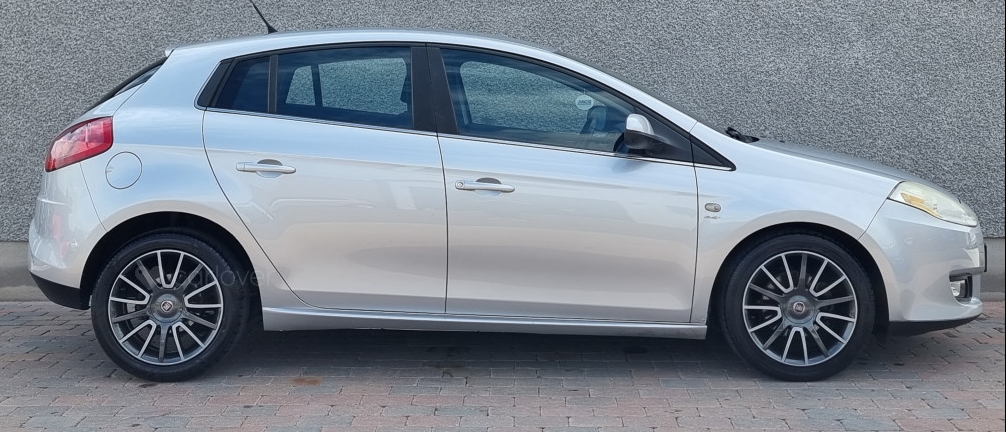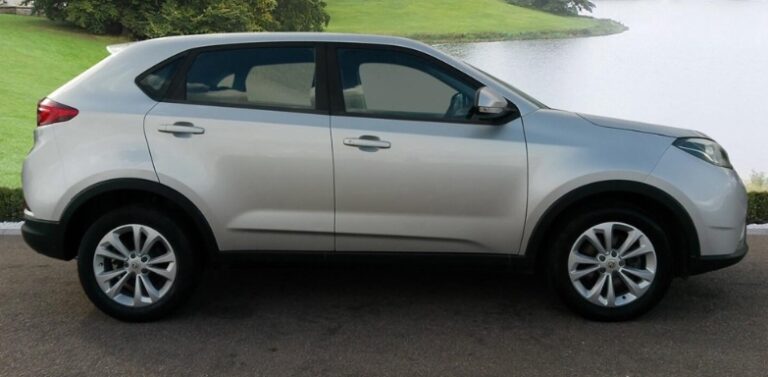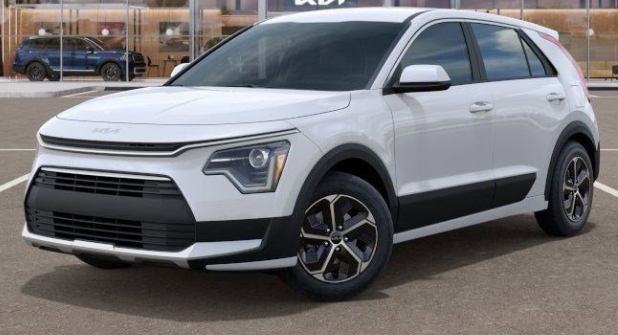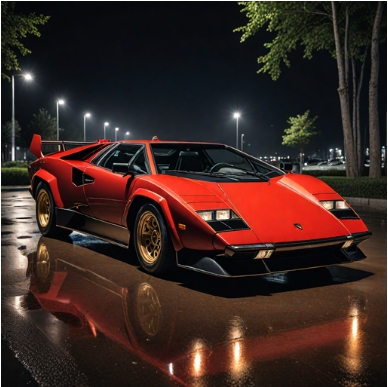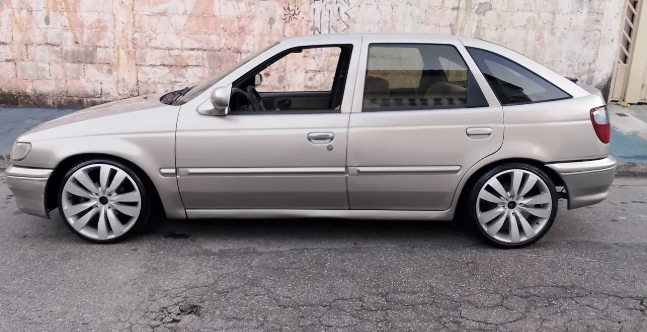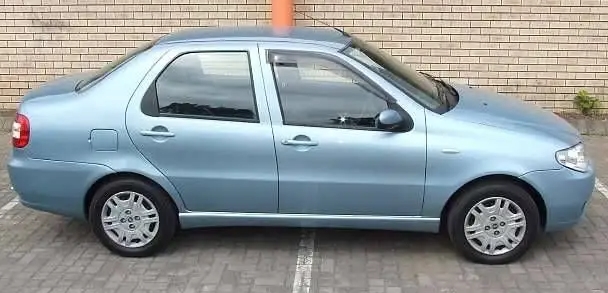The Tale of Two Siblings: The Evolution of the Fiat Brava and Fiat Bravo
In the fiercely competitive European C-segment of the 1990s, replacing a successful model was a task fraught with peril. For Fiat, the car in question was the Tipo, the 1989 European Car of the Year, a hatchback lauded for its practicality and functional, if boxy, design. To succeed it, Fiat couldn’t just create another good car; it needed to make a statement. The result, unveiled in late 1995, was not one car, but two: the Fiat Bravo and Fiat Brava. This innovative dual-pronged attack on the family car market marked the beginning of a fascinating chapter in Fiat’s history, a story of Italian flair, engineering prowess, and shifting automotive philosophies.
The First Generation (1995–2001): A Daring Division
The core concept behind the first-generation Bravo and Brava was to cater to two distinct buyer profiles with what was, underneath, the same car. The strategy was clever, acknowledging that the one-size-fits-all approach of the Tipo was becoming outdated. This was a platform-sharing exercise executed with a masterful touch of design differentiation.
The Fiat Bravo was the sporty, youthful sibling. A sleek three-door hatchback, its design was dominated by soft curves and a taut, coupe-like profile. Its most distinctive feature was its tail-light design: two pairs of round lamps set into a sculpted rear panel, a signature that made it instantly recognizable. The Bravo was aimed squarely at younger buyers, singles, and couples who valued style and a dynamic image over ultimate practicality.
The Fiat Brava, by contrast, was the sensible, mature counterpart. It was a five-door car, but instead of being a conventional hatchback, it was a “fastback” saloon, a five-door liftback with a longer rear overhang. This gave it a more elegant, elongated profile and a cavernous boot, appealing to families and those needing more versatility. Its unique design flourish was its taillights – three thin, vertical strips on each side, elegantly integrated into the C-pillars, a feature that was both stylish and highly unusual for its time.
This bold design language, born from Fiat’s own Centro Stile, was a complete departure from the angular Tipo. The soft, organic shapes were a breath of fresh air and were critically acclaimed, earning the Bravo/Brava duo the prestigious European Car of the Year award for 1996, a significant victory over rivals like the Peugeot 406.
Models and Trim Levels (1995-1999):
The initial line-up was comprehensive, designed to cover a wide swathe of the market. Trim levels generally followed a logical progression, though names could vary slightly by country.
S: The entry-level model, sparsely equipped with the basics.
SX: The volume seller. This trim added essentials like body-coloured bumpers, electric front windows, central locking, and a better quality interior trim.
ELX: A step up towards luxury, often including features like velour upholstery and the option for air conditioning.
HLX: The range-topping luxury trim, featuring alloy wheels, air conditioning as standard, front fog lights, and more premium interior finishes.
Engine Lineup (1995-1999):
The engine range was equally diverse, offering a mix of economy and performance.
Petrol:
1.4 12v: A 79 hp entry-level engine. While economical, it was often criticized for being underpowered for the car’s size.
1.6 16v: The heart of the range. This 102 hp unit was the most popular choice, offering a solid balance of performance and running costs.
1.8 16v: A warmer option with 111 hp, providing more spirited performance.
Diesel:
1.9 D: A basic, non-turbo diesel with 64 hp, focused purely on fuel economy.
1.9 TD 75 & TD 100: Two turbocharged diesel options, offering 74 hp and 99 hp respectively. These were common choices for high-mileage drivers.
The pinnacle of the first-generation range was a model exclusive to the three-door Bravo: the Bravo HGT (High Granturismo). This was Fiat’s hot hatch contender, powered by a charismatic 2.0-litre, 20-valve, five-cylinder engine derived from the Fiat Coupé. Producing 145 hp, it gave the Bravo a distinctive warbling soundtrack and impressive performance, solidifying the model’s sporty credentials.
The 1999 Facelift and JTD Innovation:
In late 1998 for the 1999 model year, the range received a mid-life update. The changes were subtle, including a new grille with the blue Fiat logo, revised interior fabrics, and minor specification adjustments. The most significant evolution, however, was under the bonnet.
The underperforming 1.4 12v petrol was replaced by the acclaimed 1.2 16v ‘FIRE’ engine from the smaller Punto, producing 80 hp. This new entry-level engine was significantly more refined and efficient.
The biggest news was the wider introduction of Fiat’s revolutionary JTD (uniJet Turbo Diesel) engine. The 1.9 JTD, producing 104 hp, was one of the world’s first common-rail direct injection diesel engines. It offered a quantum leap in refinement, performance, and efficiency over the older TD units, setting a new benchmark for diesel technology in family cars.
The Bravo/Brava platform also proved versatile, spawning the Fiat Marea saloon and Marea Weekend estate, as well as providing the basis for the brilliantly quirky, six-seater Fiat Multipla. Production of the Bravo and Brava ceased in 2001, making way for a car with a completely different philosophy: the Fiat Stilo.
The Interlude and The Return: Fiat Bravo (2007–2014)
The Fiat Stilo (2001-2007), which replaced the Bravo/Brava, was a competent car but represented a strategic shift. It adopted a more solid, “Germanic” design and feel, aiming to beat Volkswagen at its own game. While technically advanced, it was widely seen as lacking the Italian flair and character of its predecessor and failed to capture the market’s imagination.
By 2007, Fiat was resurgent, buoyed by the phenomenal success of the Grande Punto. For the Stilo’s replacement, the company looked to its past for a name that still resonated with style and success: Bravo. This time, however, there would be no Brava sibling. The new Fiat Bravo was a single, five-door hatchback model designed to be a stylish, high-quality, and technologically advanced contender.
Design and Technology:
Launched with the tagline “The Beautiful, Concrete thing,” the new Bravo was a stunning return to form for Fiat design. Penned by Frank Stephenson, its design was heavily influenced by the Grande Punto, featuring teardrop headlights, a curvaceous body, and an elegant, flowing silhouette. It was undeniably Italian and stood out in a sea of conservative competitors like the VW Golf and Ford Focus.
Underneath, it used a heavily modified version of the Stilo’s platform, but the big story was its engine technology. The second-generation Bravo became the launchpad for Fiat’s innovative T-Jet (Turbojet) family of small-capacity turbocharged petrol engines. This was a pioneering move in engine downsizing, offering the performance of a larger engine with the fuel economy and lower emissions of a smaller one.
Models and Trim Levels (2007-2014):
The trim structure was simplified and aimed at different customer priorities. Common trim levels across Europe included:
Active: The entry point, which often included air conditioning and electric front windows.
Dynamic: The likely best-seller, adding alloy wheels, cruise control, and often Fiat’s Blue&Me infotainment system with Bluetooth connectivity.
Emotion: A comfort-oriented trim with features like dual-zone climate control, parking sensors, and more luxurious interior finishes.
Sport: As the name implies, this trim offered a sportier feel with 17-inch or 18-inch alloy wheels, firmer suspension, sport seats, and cosmetic enhancements like a rear spoiler and chrome exhaust tips.
Engine Lineup (2007-2014):
The engine range was a showcase of Fiat Powertrain Technologies’ modern engineering.
Petrol:
1.4 16v: A basic 89 hp naturally-aspirated engine for the entry-level models.
1.4 T-Jet: This was the star of the show, available in two states of tune: 118 hp and a more powerful 148 hp version. These engines were praised for their punchy performance and refinement.
1.4 MultiAir Turbo: Introduced later in the car’s life, this 138 hp engine featured Fiat’s groundbreaking electro-hydraulic valve control technology, further improving performance and efficiency.
Diesel (MultiJet):
1.6 MultiJet: The evolution of the JTD, this engine was offered with 104 hp and 118 hp, focusing on excellent fuel economy and low CO2 emissions. A detuned 89 hp “Eco” version was also available in some markets.
1.9 MultiJet: Carried over initially, this engine was available with 118 hp and a powerful 148 hp 16v version.
2.0 MultiJet: Later in the production run, a new 163 hp 2.0 MultiJet replaced the top-end 1.9, offering formidable torque and performance.
Despite its beautiful design, advanced engines, and competitive pricing, the second-generation Bravo struggled to make a significant dent in the C-segment. It was a hugely competent and desirable car, but it faced immense pressure from the established class leaders. Sales were respectable but never reached the heights Fiat had hoped for.
Production of the Bravo quietly wound down in Europe in 2014. The nameplate continued on a version for the Brazilian market for a couple more years, but its chapter in European automotive history was closed.
.
Many car aficionados have multiple hobbies, like boating as well as auto stuff. Those who don’t already own a boat (and even some that do), may have thought about building their own boats. It’s really not as hard as you’d think. Just take a look at these easy boat building plans!

.
Legacy
The Fiat Bravo and Brava represent two distinct eras of Fiat’s ambition. The first generation was a bold, award-winning statement of design confidence, successfully splitting a single model’s identity to broaden its appeal. It brought innovative diesel technology to the masses and is remembered fondly for its charismatic styling. The second-generation Bravo was a more mature, technologically focused effort to create a stylish and high-quality alternative to the German establishment. While it didn’t conquer the class, it proved that Fiat could build a car that was not only beautiful but also sophisticated and engineered to a high standard.
From the dual-body brilliance of 1995 to the turbocharged elegance of 2007, the Bravo and Brava names bookend a crucial period for Fiat, leaving a legacy of Italian design flair and pioneering engine technology.
